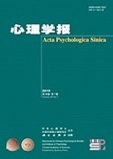The primary objective of this study was to investigate the impact of an internet-based Cognitive Bias Modification - Interpretation (iCBM-I) intervention on health anxiety, factors influencing its effectiveness, and the role of catastrophic interpretation in mediating intervention outcomes. In a randomized controlled trial, 228 participants diagnosed with health anxiety were allocated to one of three groups: the iCBM-I intervention group, which received 100% positive feedback (N = 76); an attentional control group, which received a balanced 50% positive and 50% negative feedback (N = 76); and a waiting group (N = 76) that did not participate in any training. Both the intervention and attentional control groups underwent 12 days of online task training. Measurements of health anxiety, catastrophizing interpretations, general anxiety, and depression were taken at baseline, immediately post-intervention, and one month following the intervention. The findings indicated significant immediate and sustained one-month post-intervention effects of the iCBM-I on reducing catastrophizing interpretations, general anxiety, and depressive symptoms among participants with health anxiety, compared to those in the waiting group. Furthermore, longitudinal mediation analysis using a latent growth curve model demonstrated that the iCBM-I intervention ameliorated health anxiety by reducing catastrophic interpretations, relative to the attention control group. This study contributes a novel perspective on the efficacy of network-based interventions for health anxiety and suggests that future research should explore the integration of top-down and bottom-up approaches to enhance the effectiveness of interventions targeting health anxiety.




